RIO DE JANEIRO—This is what we call a “throwback”, the pun is intended, the wheel runs in reverse allowing us to visit important earlier exhibits we had missed.
In 2017 we published a small feature on the work of Brazilian artist Maria Nepomuceno. It caused a great deal of attention and we promised to publish more about this innovative artist, so here we go.

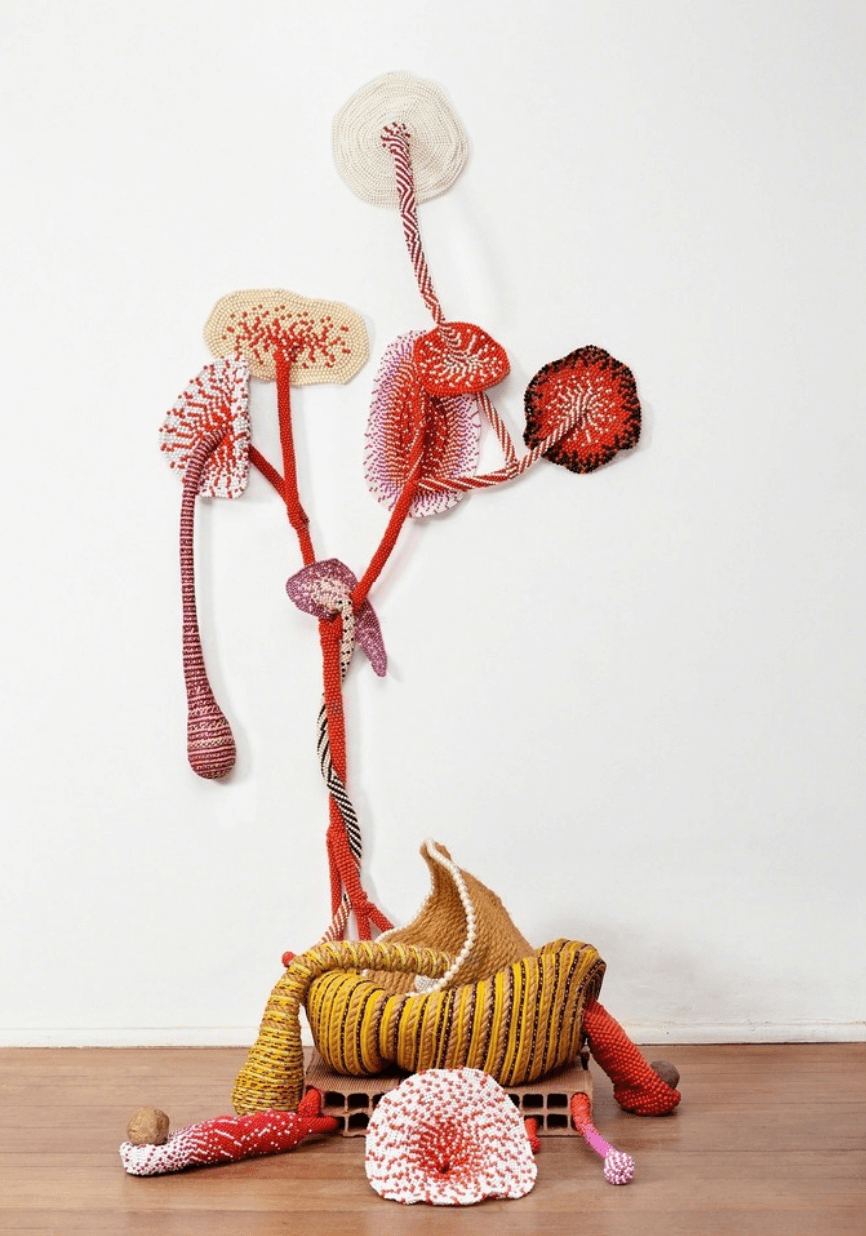
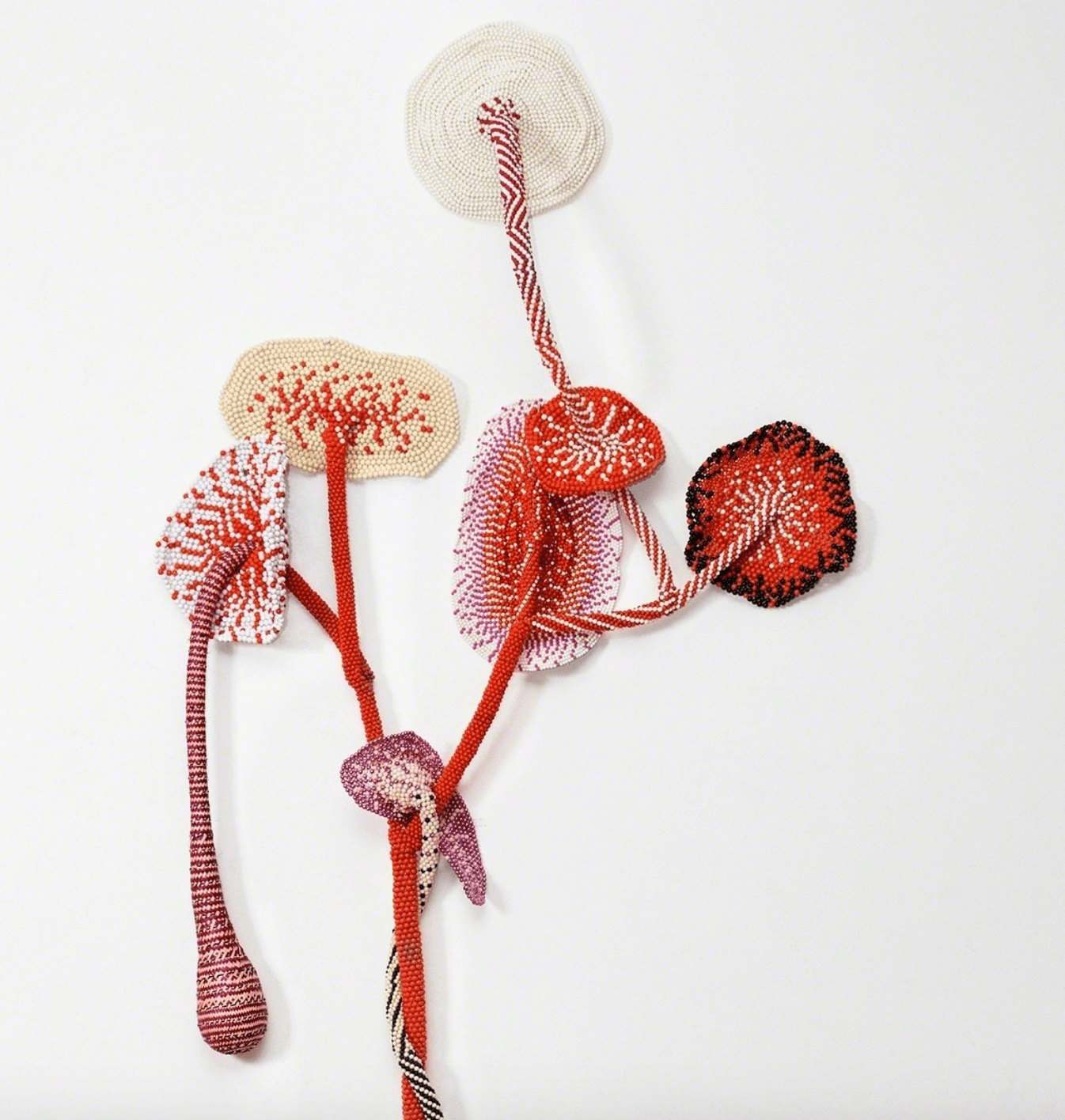
This post covers her most recent solo-exhibition with a few drop-ins, Vital, in 2018 with Sikkema Jenkins & Co. Currently she is represented by Victoria Miro, London and in Rio de Janeiro by A Gentil Carioca, Rio –a place to think, produce, experiment, and celebrate. It is her creative home, a contemporary art gallery founded on September 6, 2003 by three artists – Márcio Botner, Ernesto Neto and Laura Lima.
It is located in Saara, the Historic Center of Rio de Janeiro, the largest open market in Latin America, founded in the last century by Arab and Jewish immigrants. It is possible to find every kind of trinket and spice, a fundamental attraction for many artists and the curious.
Sikkema Jenkins explains her eclectic approach to materials that incorporates everything including colorful ropes and beads, ceramics, gourds, wood, woven carnauba (palm) straw, and industrial finished resin forms:
“Maria Nepomuceno creates sculptures and installations that evoke organic structures. Nepomuceno is a sculptor and installation artist whose labor-intensive practice is based upon traditional weaving techniques. Nepomuceno originally studied painting and drawing, and later explored interests in industrial design and philosophy. Using bright colored fibers, she makes soft forms that she then assembles into pieces in an additive process.
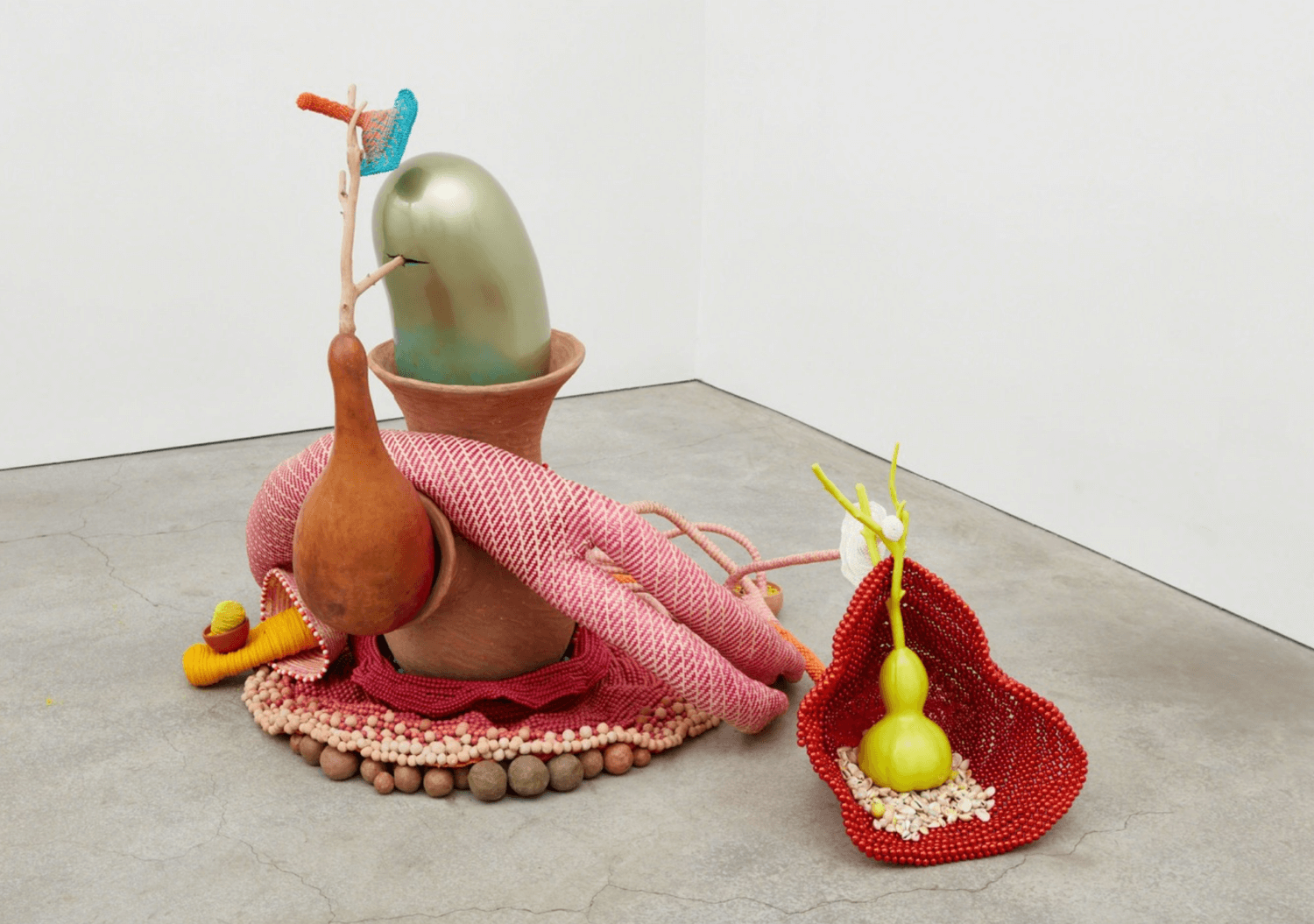
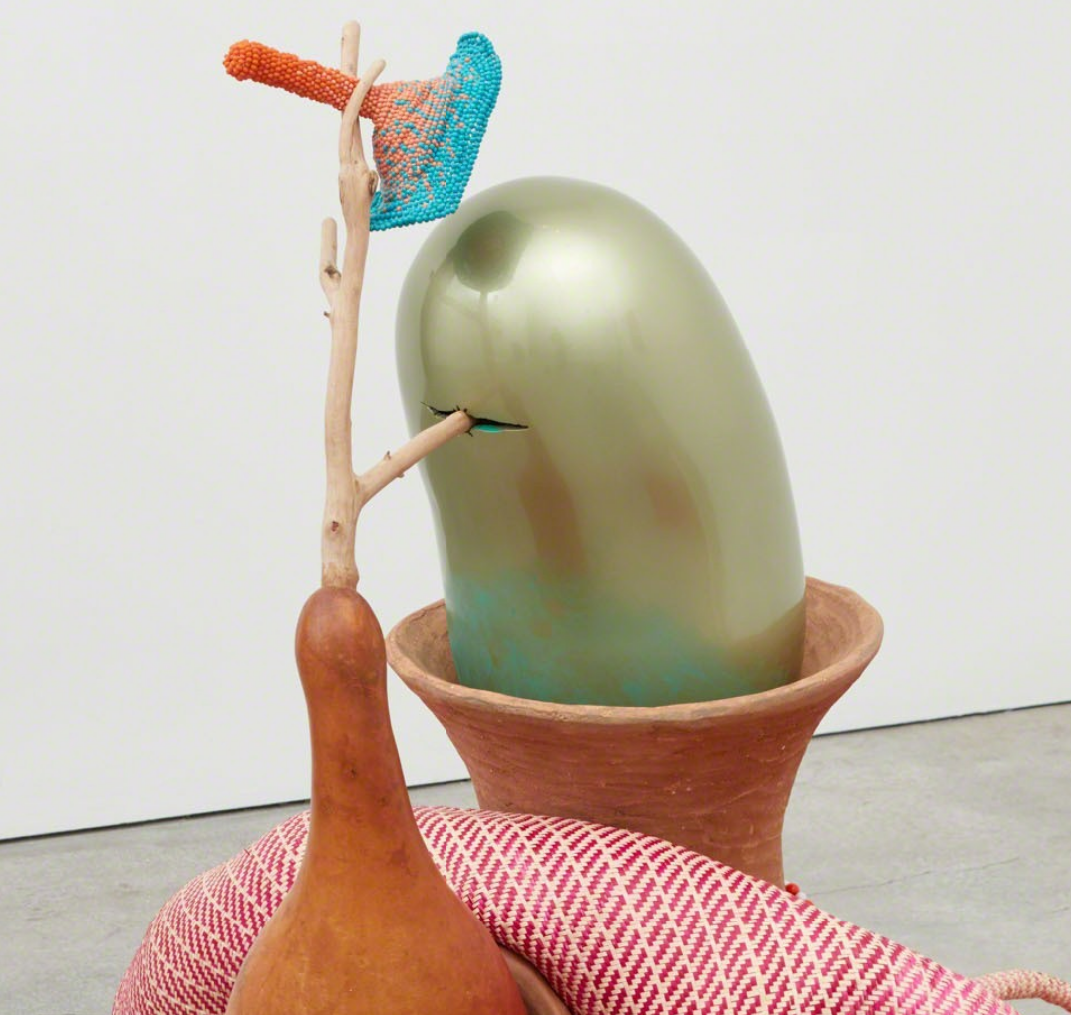
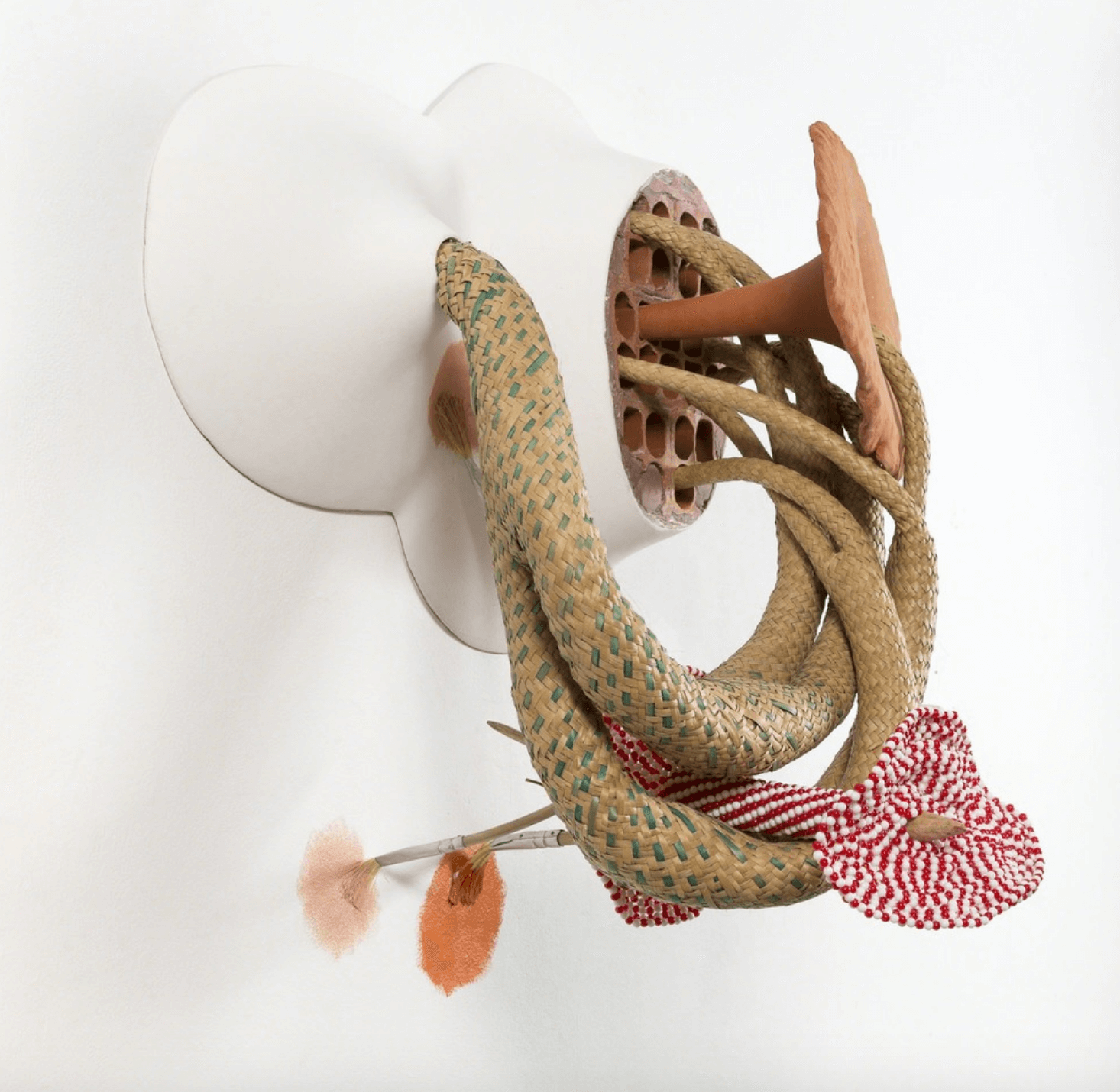
Nepomuceno was born in 1976 in Rio de Janeiro, where she lives and works. The artist describes herself as “the fruit of a great mix of races, something very common in Brazil. And one of my intentions is to have these works reflect the richness of my home country.”
She insists that she is Carioca, a native word meaning “of Rio” coming from “kara’i oka”, from the indigenous Guaraní, a native tribe of Rio de Janeiro. In their Tupi language it meant “house of carijó”. Now it means anything and anyone from Rio. “My artworks”, she states, “are like the city of Rio, a mix of man and animal, body and nature.”
Sometimes with the help of volunteer artists and artisans, Nepomuceno creates installations that fill rooms or extend beyond the exhibition space and into their surrounding landscapes. Certain forms recur in her work, including vessels, hammocks, beads, bulbs, and tubes. She considers the spiral, made from rope, to be a central image and unifying motif, in part because “It always makes the same movement but always into a new path”.
Her obsession with rope anchors her art but sprang from a frightening moment:
“I started using rope to make sculpture 12 years ago after my daughter was born because she came out with the umbilical cord around her neck. It is a symbol of the connection between the mother and child – a temporary organ [that keeps the child alive] but can also be dangerous”.
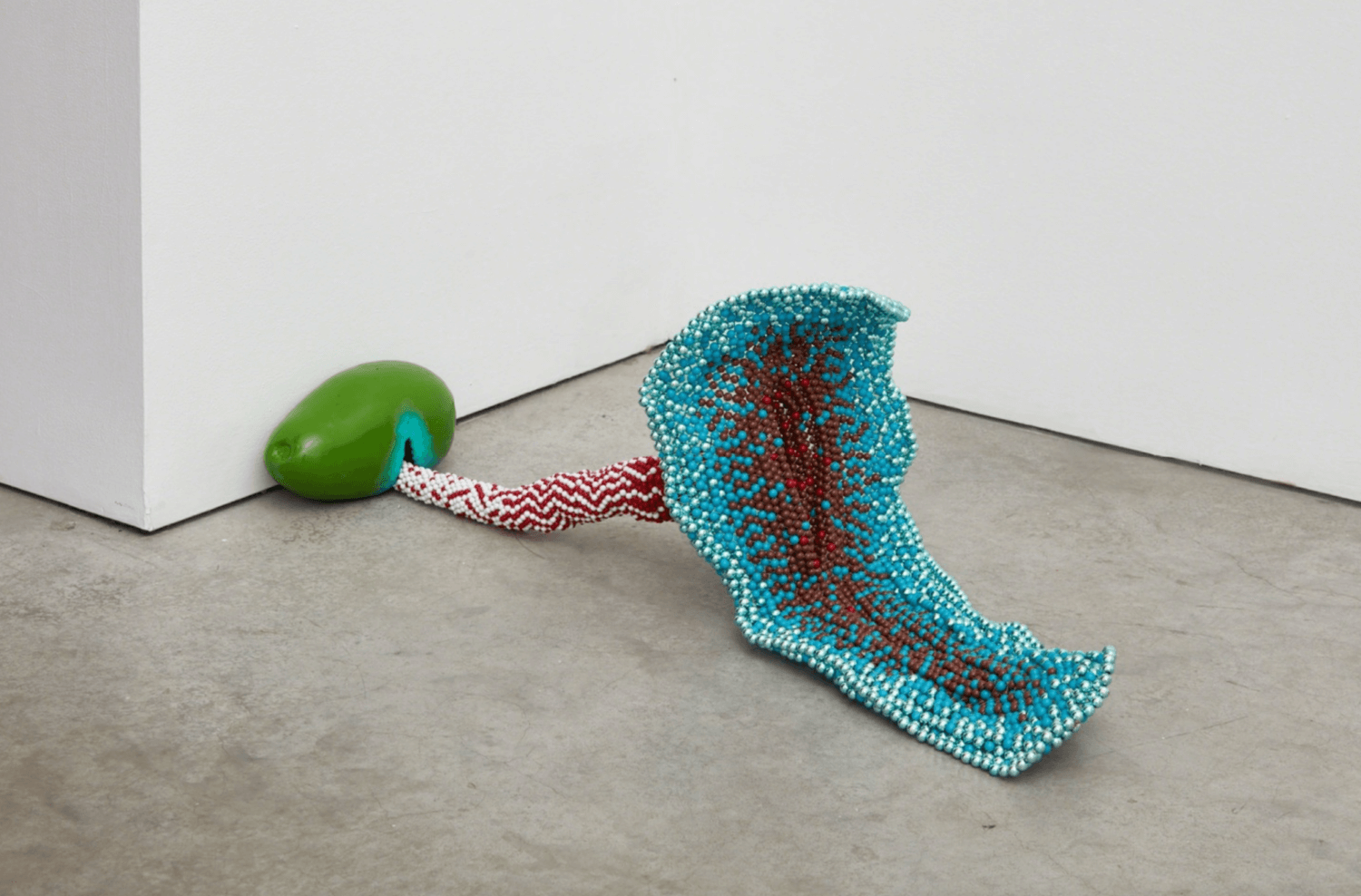
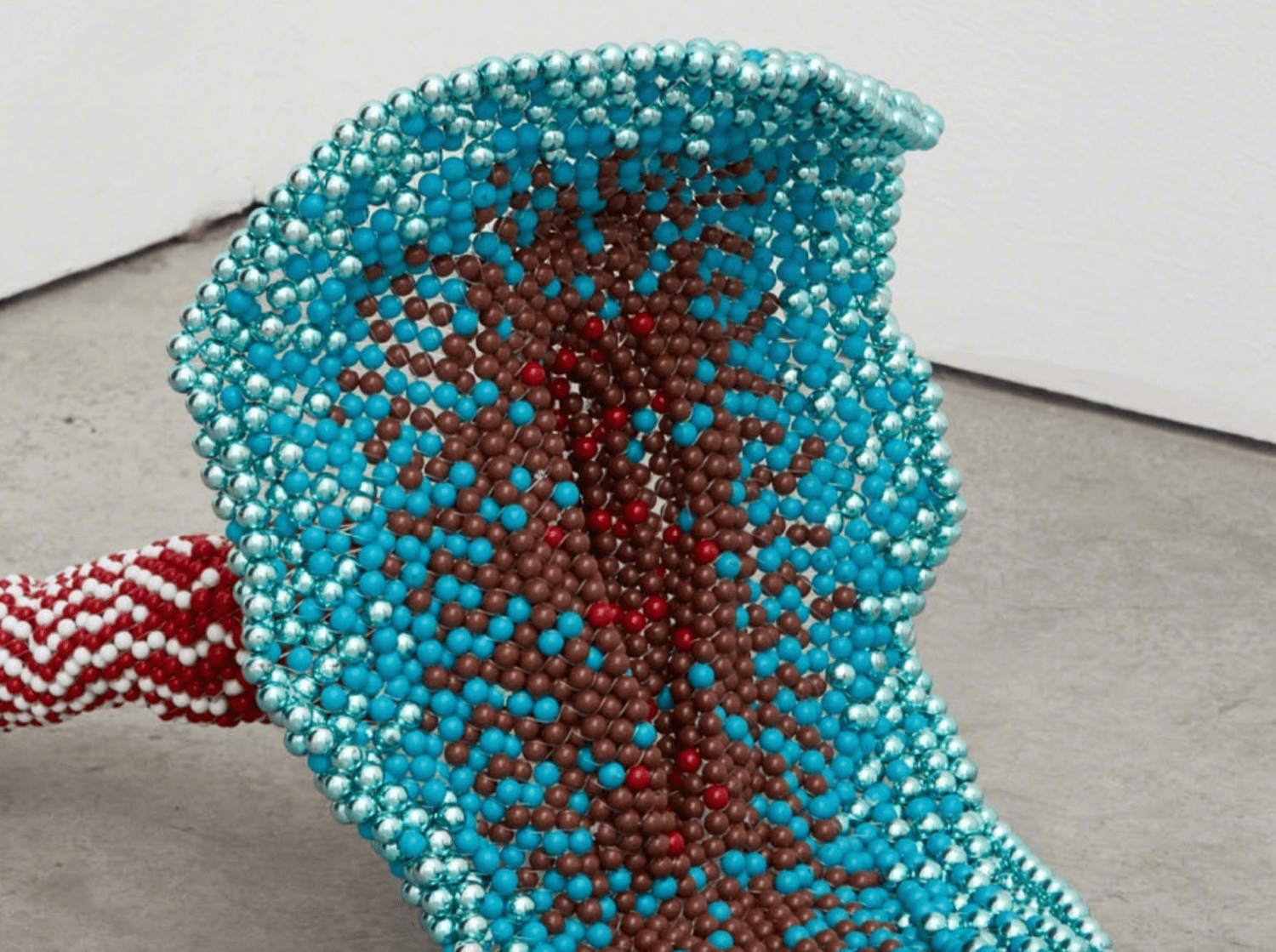
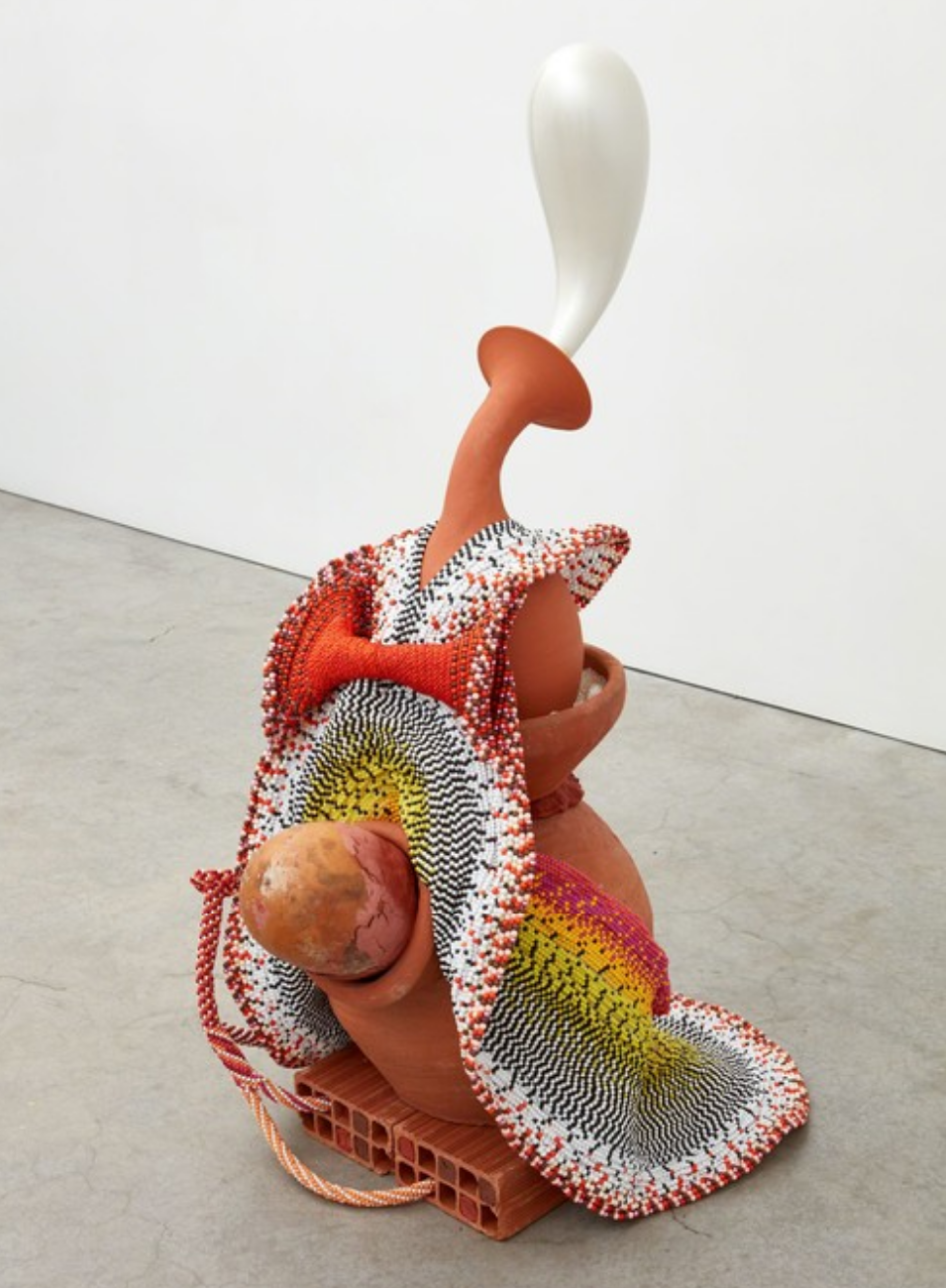
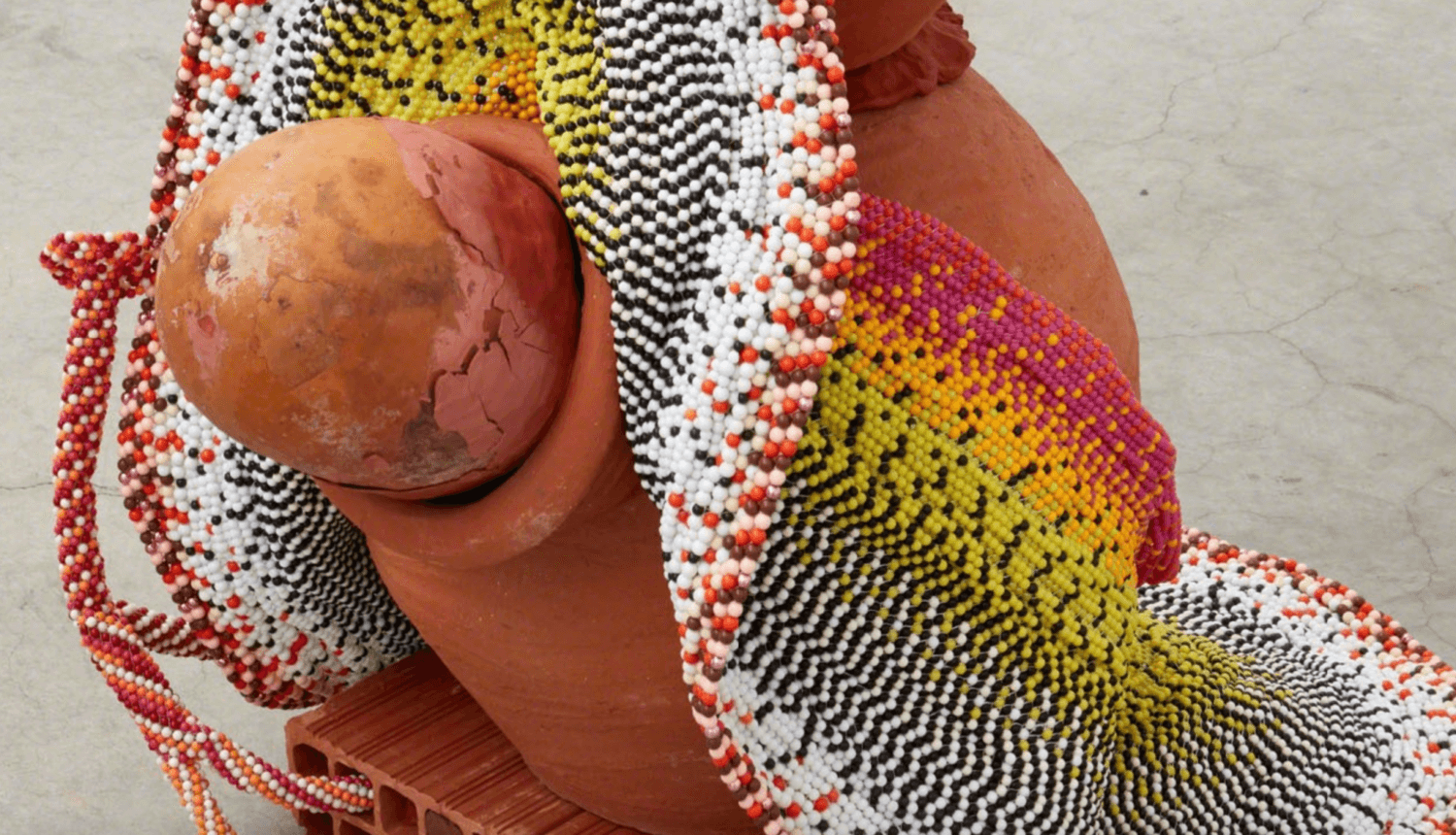
Nepomuceno began collaborating with the indigenous Huni Kuin people in the state of Acre in the north of Brazil that evolved her own styles and process from their weaving techniques. In an interview in Studio International with Angeria Rigamonti de Cuto she offered to explain the origins of this idea.
“I’d like to speak a little about how this idea began. It was really something in my blood. My great-grandmother was indigenous; from Ceará in the north-east of Brazil. I have a very indigenous face that I must have inherited from my ancestors and it’s funny because no one else in my family has such features and such black hair. I’ve had an awareness of this since I was a child, and also my uncle who taught me to paint, loved to paint indigenous people. He gave me a set of 80 cards with indigenous people from many different tribes, showing them in scenes of everyday life, fishing, sewing, braiding.
Angeria Rigamonti de Cuto then asked about the darker side of the work:
ARC : Although your sculptures can be sunny and joyful, at the same time I find they have an aspect of unease. There’s something about these invasive, triffid-like organisms with an apparent life of their own that can feel faintly disquieting. Is this something you consciously want to evoke?… So are you also thinking about a darker side of that vital energy?
MP: Not a dark side. I think that the shape of the spiral I use is an analogy for the spirit or essence of the work. The construction of the piece is always based on a spiral: the stitching is in a spiral and I like to use this form to represent a sense of the work that alternates between inside and outside; it goes somewhere deep and far, to our origins and the essence of our life. The spiral also moves outwards; it’s open and expands towards the infinite. I don’t think there’s darkness, but there is a void in the work, something that sucks you in.
Garth Clark
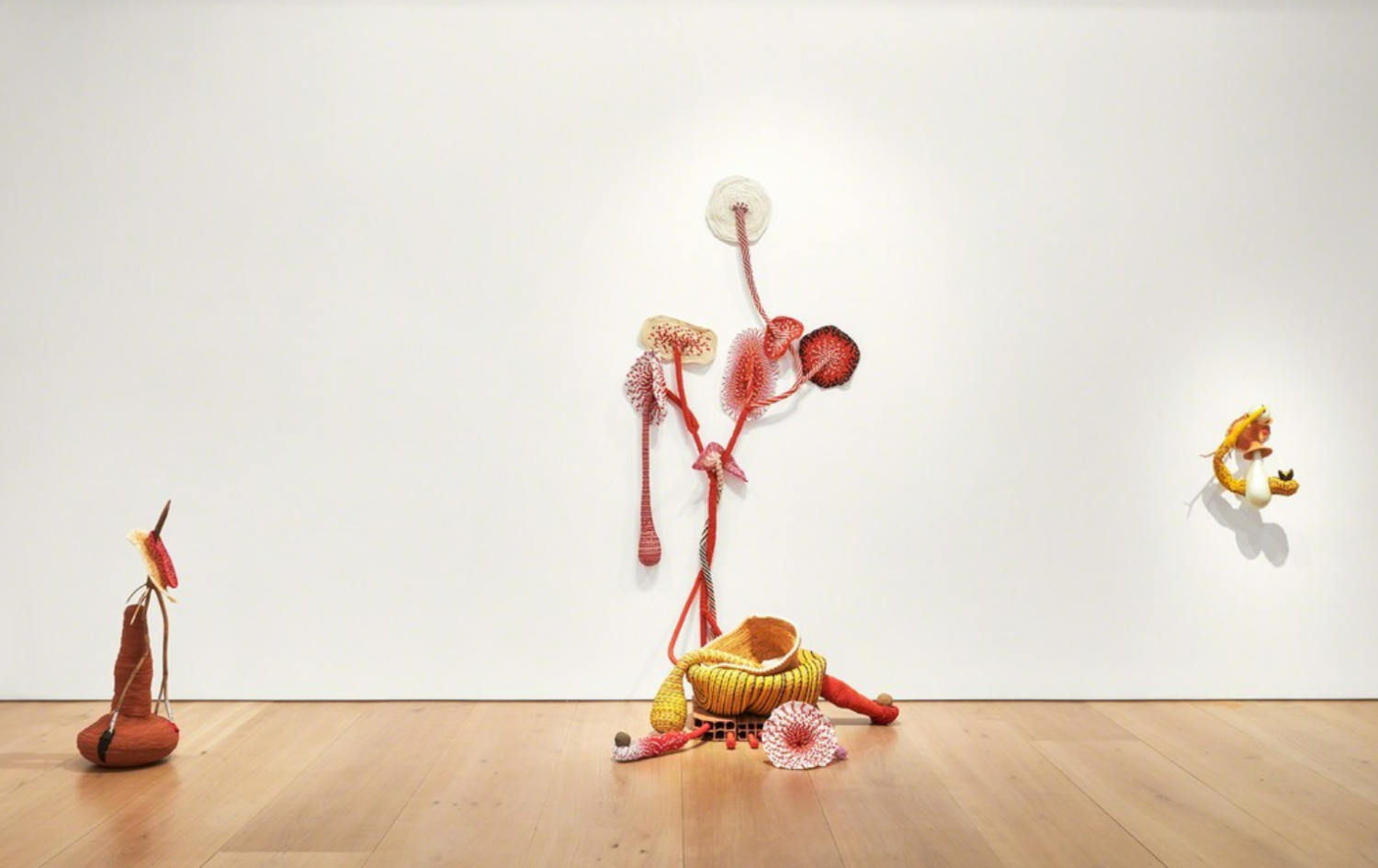
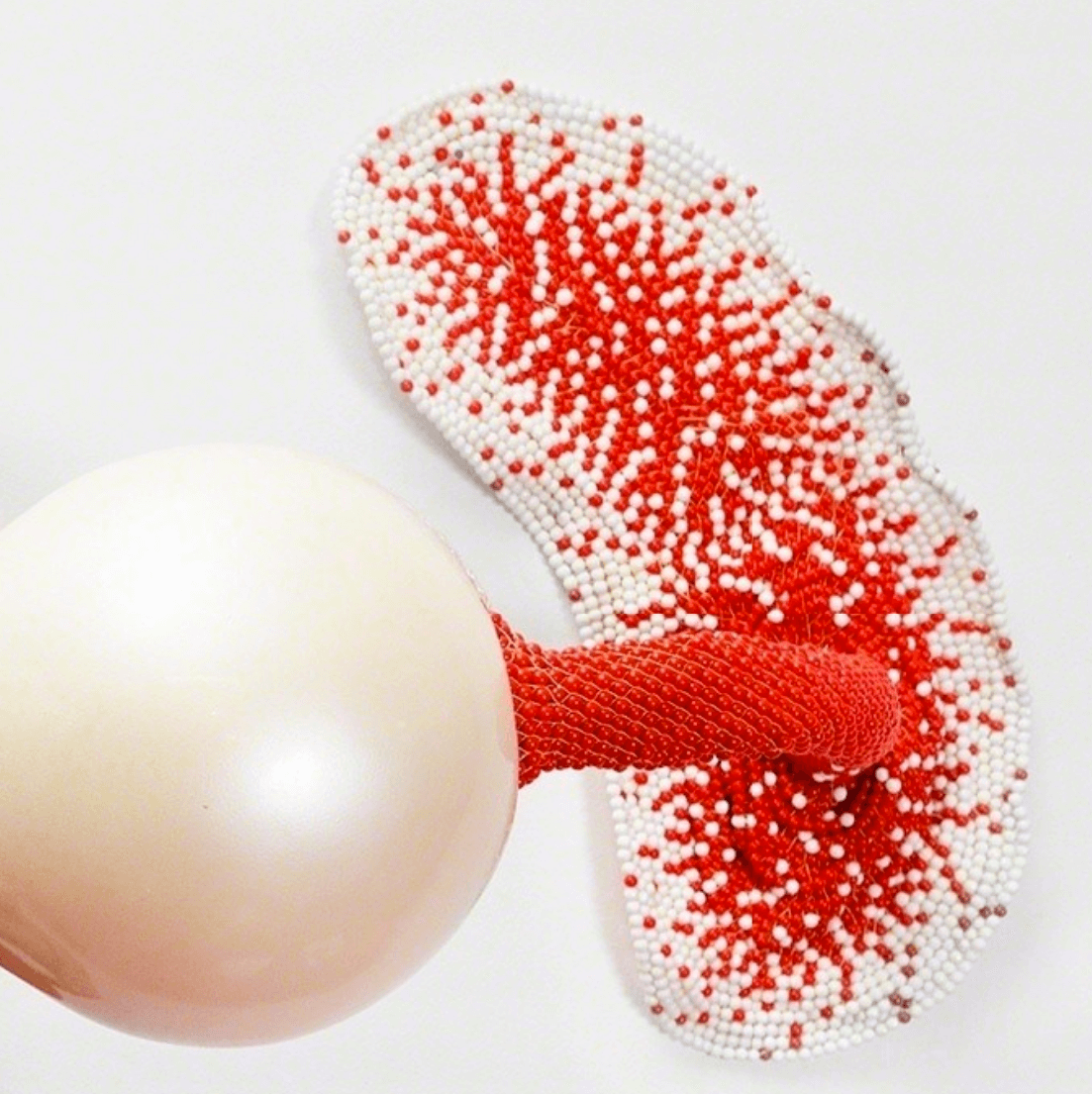
Add your valued opinion to this post.